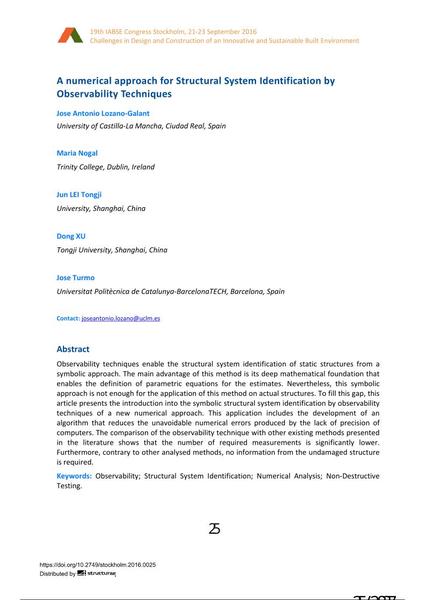A numerical approach for Structural System Identification by Observability Techniques

|
|
|||||||||||
Détails bibliographiques
| Auteur(s): |
Jose Antonio Lozano Galant
(University of Castilla-La Mancha, Ciudad Real, Spain)
Maria Nogal (Trinity College, Dublin, Ireland) Jun Lei (University, Shanghai, China) Dong Xu (Tongji University, Shanghai, China) José Turmo |
||||
|---|---|---|---|---|---|
| Médium: | papier de conférence | ||||
| Langue(s): | anglais | ||||
| Conférence: | IABSE Congress: Challenges in Design and Construction of an Innovative and Sustainable Built Environment, Stockholm, Sweden, 21-23 September 2016 | ||||
| Publié dans: | IABSE Congress Stockholm, 2016 | ||||
|
|||||
| Page(s): | 25-31 | ||||
| Nombre total de pages (du PDF): | 7 | ||||
| Année: | 2016 | ||||
| DOI: | 10.2749/stockholm.2016.0025 | ||||
| Abstrait: |
Observability techniques enable the structural system identification of static structures from a symbolic approach. The main advantage of this method is its deep mathematical foundation that enables the definition of parametric equations for the estimates. Nevertheless, this symbolic approach is not enough for the application of this method on actual structures. To fill this gap, this article presents the introduction into the symbolic structural system identification by observability techniques of a new numerical approach. This application includes the development of an algorithm that reduces the unavoidable numerical errors produced by the lack of precision of computers. The comparison of the observability technique with other existing methods presented in the literature shows that the number of required measurements is significantly lower. Furthermore, contrary to other analysed methods, no information from the undamaged structure is required. |
||||
